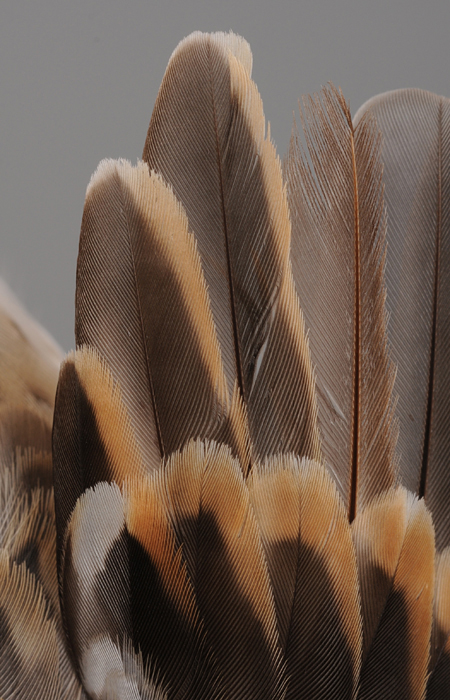

Brambling
AGE – BEST CRITERIA:
Autumn criterias are still applicable, though 2cy are more affected to wear during the winter than adult. Moult contrast present in the wing of 2cy, generally among central or outer GC, and in a few birds also in TT or RR. Adult birds show a uniform and freshly moulted plumage.
2cy:

3cy+ April (female), showing variation. Note that innermost S was not included in the complete moult (=retained/forgotten feather) and by now is more than 1,5 years old. If this feather could be specified to generation (juvenile vs post-breeding) the age of the bird could theoretically be set to 3cy or 4cy+. However, the wear of a feather is affected by many different factors, and such specification is generally risky. [1ET29458]
More Fringilla montifringilla:
Sexing spring
Ageing autumn
Sexing autumn
Moult
Ringers’ DigiGuide is sponsored by:
Hemsidan producerad i samarbete med
BirdLife Sverige